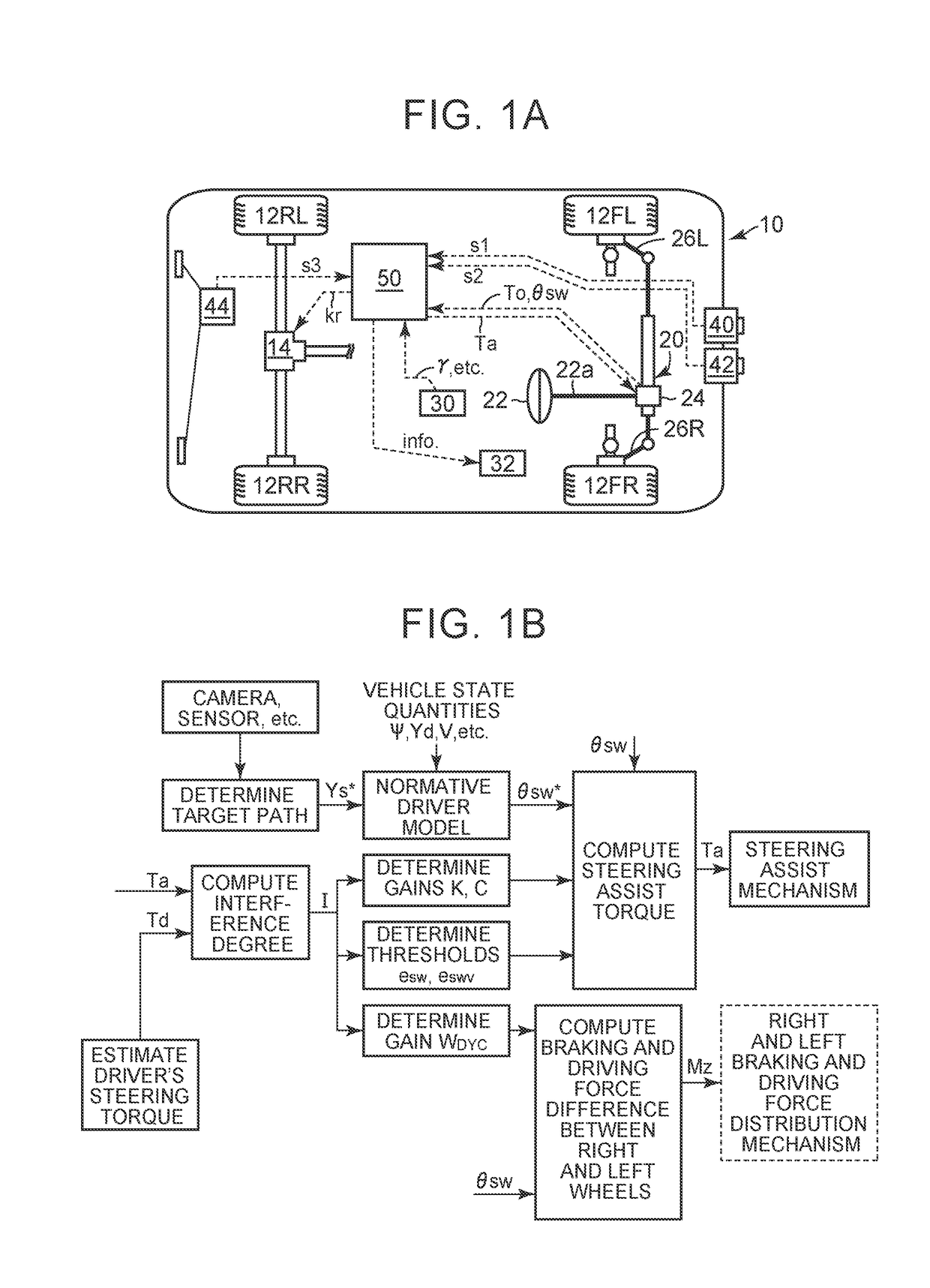Driving assistance control apparatus for vehicle
a technology for driving assistance and control apparatus, which is applied in the direction of brake systems, brake components, transportation and packaging, etc., can solve the problems of affecting the safety of drivers, so as to reduce the steering angle and reduce the feeling of strangeness, the effect of reducing the energy consumption
- Summary
- Abstract
- Description
- Claims
- Application Information
AI Technical Summary
Benefits of technology
Problems solved by technology
Method used
Image
Examples
Embodiment Construction
Configuration of Vehicle
[0042]As shown in FIG. 1A, a vehicle 10, such as an automobile, in which an embodiment of the driving assistance control apparatus according to the invention is incorporated, includes right and left front wheels 12FR, 12FL, right and left rear wheels 12RR, 12RL, a drive system device (partially shown), a steering device 20 and a brake system device (not shown) in an ordinary mode. The drive system device generates braking and driving force in each wheel (in the illustrated example, only the rear wheels because the vehicle is a rear-wheel drive vehicle; the vehicle may be a front-wheel drive vehicle or a four-wheel drive vehicle) in response to driver's depression of an accelerator pedal. The steering device 20 is used to control the steering angle of the front wheels. A steering device for the rear wheels may be further provided. The braking system device generates braking force in each wheel. In an ordinary mode, the drive system device is configured to tran...
PUM
 Login to View More
Login to View More Abstract
Description
Claims
Application Information
 Login to View More
Login to View More - R&D
- Intellectual Property
- Life Sciences
- Materials
- Tech Scout
- Unparalleled Data Quality
- Higher Quality Content
- 60% Fewer Hallucinations
Browse by: Latest US Patents, China's latest patents, Technical Efficacy Thesaurus, Application Domain, Technology Topic, Popular Technical Reports.
© 2025 PatSnap. All rights reserved.Legal|Privacy policy|Modern Slavery Act Transparency Statement|Sitemap|About US| Contact US: help@patsnap.com



